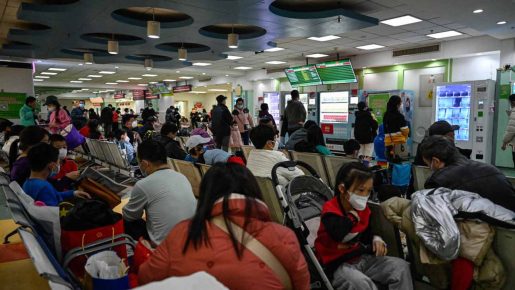The World Health Organization (WHO) has formally reached out to China, urging the nation to provide more comprehensive data concerning the recent surge in respiratory illnesses, particularly in the northern regions. The call for information comes as Northern China has witnessed a notable increase in cases resembling “influenza-like illness” since mid-October, a deviation from the patterns observed in the same period over the past three years, as reported by the WHO.
In an official statement released on Wednesday, the UN health body stated, “WHO has made an official request to China for detailed information on an increase in respiratory illnesses and reported clusters of pneumonia in children.” Despite this request, there has been no public comment from Beijing as of Thursday, leaving the international community awaiting further insights into the evolving situation.
China’s National Health Commission, however, offered an explanation last week, attributing the rise in respiratory illnesses to the relaxation of COVID-19 restrictions and the circulation of known pathogens. Notably, these include influenza and common bacterial infections affecting children, such as mycoplasma pneumonia. The acknowledgment of these factors seeks to provide context to the observed spike in cases.
The capital city, Beijing, located in the affected northern region, is currently grappling with a cold snap, with temperatures expected to plummet significantly by Friday, as reported by state media. Against this backdrop, Wang Quanyi, the deputy director and chief epidemiological expert at the Beijing Center for Disease Control and Prevention, highlighted that the city has entered a high incidence season of respiratory infectious diseases, further emphasizing the coexistence of multiple pathogens.
While the WHO’s request for more information remains unanswered by China, the National Health Commission did not respond to a request for comment from Agence France-Presse (AFP) on Thursday. Beijing’s foreign ministry spokeswoman directed journalists to “the competent Chinese authorities,” maintaining a level of opacity around the unfolding situation.
Reports from the ground reveal the impact on local communities, particularly at children’s hospitals in Beijing. AFP journalists observed crowds of parents and children dressed in winter clothes, seeking medical attention. Some parents expressed concern about their children contracting mycoplasma pneumonia, a pathogen known for causing sore throats, fatigue, and fever.
The WHO’s intervention comes in the wake of ProMED reporting clusters of undiagnosed pneumonia in children in northern China on November 21. The WHO clarified that it was uncertain if ProMED’s report was linked to the Chinese authorities’ press conference and sought clarification on the matter.
In addition to requesting information on the recent trends in known pathogens, including influenza, SARS-CoV-2 (the virus causing COVID-19), RSV affecting infants, and Mycoplasma pneumoniae, the WHO issued a public health advisory. It urged people to adopt preventative measures, including vaccination, maintaining distance from sick individuals, and wearing masks to reduce the risk of infection.
Conclusion: WHO

Amidst these developments, there are echoes of the past, with reminders of the WHO’s previous criticisms of Chinese authorities during the COVID-19 pandemic. The lack of transparency and cooperation has been a longstanding concern, and the call for data transparency becomes even more critical in the context of unraveling the origins of COVID-19. Despite the passage of more than three years since the initial cases were detected in Wuhan, the debate surrounding the virus’s origins continues. WHO chief Tedros Adhanom Ghebreyesus has emphasized the importance of obtaining comprehensive data to prevent future pandemics, underscoring the global significance of collaborative efforts in public health crises.










